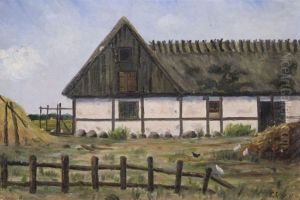Ludwig Lange Paintings
Ludwig Lange was a German architect, artist, and academic born on March 22, 1808, in Darmstadt, Germany. He is known for his contributions to the field of architecture and his role as a professor. Although not as widely recognized as some of his contemporaries, Lange made significant contributions to 19th-century architecture and urban planning.
After studying architecture, Lange began his career as an architect and an academic. He was interested in the aesthetics and theory of architecture, which led him to become a professor at the Polytechnic School in Karlsruhe. His work as an educator was influential, and he mentored several students who would go on to become important figures in the field of architecture.
Lange's architectural style was influenced by classicism and the burgeoning neoclassical movement, which sought to revive the principles and styles of ancient Greek and Roman architecture. He was particularly interested in the urban planning concepts of ancient civilizations and how they could be applied to modern cities. His architectural designs often featured clear lines, symmetrical forms, and a sense of order, reflecting the neoclassical ideals of harmony and proportion.
In addition to his architectural work, Ludwig Lange was also known for his artistic talents, particularly in drawing and painting. He produced a number of sketches and watercolors, many of which depicted architectural subjects. These works were not only artistic expressions but also served as educational tools for his students and for the broader public to understand architectural principles.
Ludwig Lange passed away on March 31, 1868, in Karlsruhe, Germany. His legacy lives on through his contributions to architectural education and his influence on the neoclassical movement in Germany. While he may not be as celebrated as some of his peers, Lange's work remains an important part of the history of architecture and urban planning in the 19th century.











